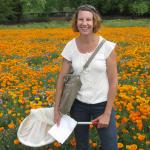Every year, Xerces works with dozens of partners and gives away tens of thousands of plants through our habitat kit program in California. Last summer, we set out to visit a few of the more than 400 partners who have installed a habitat kit since the program started in 2019. We want to stay connected with partners well beyond the time when people plant their kits, as building both long-term relationships and long-term habitat are central to restoring California habitat.
The fifteen different projects that we visited over the course of two weeks in early June ended up being one of the highlights of my year, and we are deeply appreciative of the partners who took the time to show us around and talk to us about their projects. Here are a few of the organizations making a difference for California monarchs and pollinators!
Placer County Resource Conservation District
We kicked things off with a visit to Placer County in Northern California, where the local resource conservation district (Placer RCD) has managed over a dozen different habitat kit projects over the past several years. The range of projects in the county is impressive – from a community garden where the habitat kits are integrated into small vegetable plots, to a park where the kit plants border a recreational trail, beautifying the area and supporting pollinators and other wildlife.
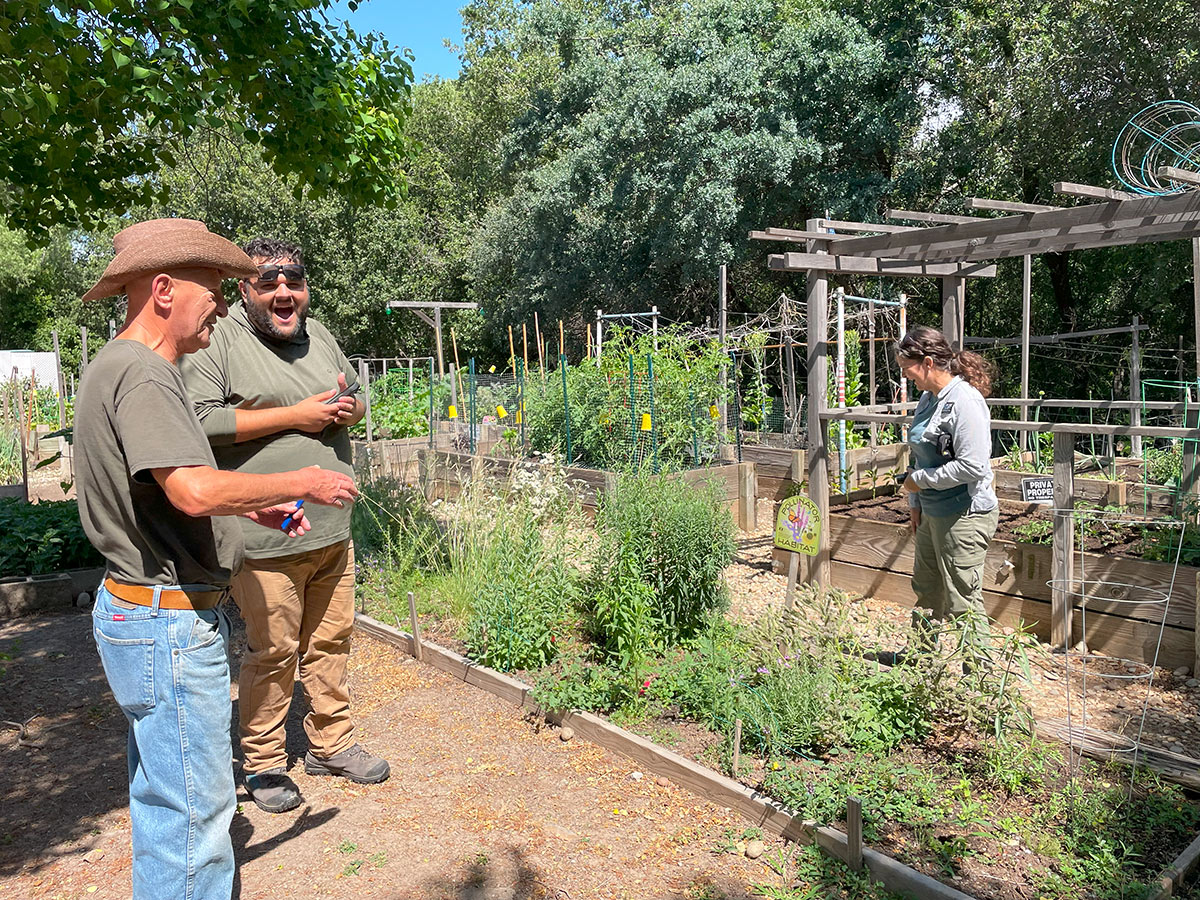
Contra Costa Resource Conservation District
From there, we headed to the central coast, where the Contra Costa RCD has been managing and implementing an impressive number of projects with local partners. We visited a middle-school farm and garden project, several urban farms working to create land stewardship, food sovereignty and employment opportunities for historically underrepresented communities, and an Indigenous women-led land trust. We were incredibly inspired by the ways in which the habitat kits have been used to benefit both pollinators and humans alike.
Kearney Agricultural Research and Extension Center
Our next stop was in the heart of California’s central valley. The Center has planted extensive demonstration hedgerows from the Xerces Society’s habitat kits and holds outreach events and trainings on site, demonstrating how hedgerows can be integrated into cropping systems. Staff report that these events have been instrumental in building interest in conservation and on-farm habitat among local farmers.
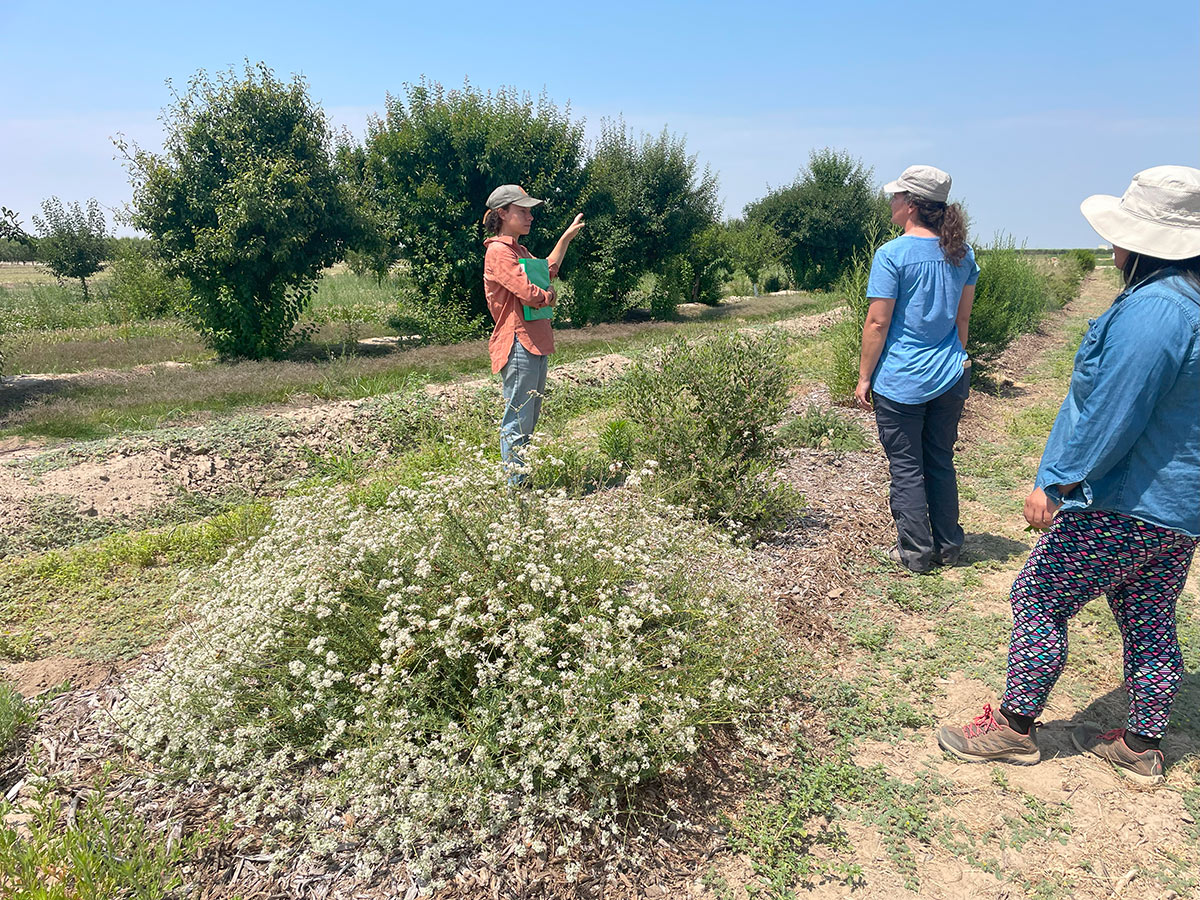
Sierra Vista Open Space Preserve
Our first week wrapped up with a visit to the Sierra Vista Open Space Preserve in Santa Clara county, where a number of habitat kits have been integrated into natural areas using innovative, low-tech methods. The preserve was stunning and the views breathtaking!
Napa vineyards
Week two started with a day touring habitat kit projects at vineyards in the heart of wine country, Napa County. Winegrape growers throughout California have been among the earliest adopters of planting hedgerows, and among the largest demographic to participate in our habitat kit program. Vineyard managers shared with us the myriad of benefits observed after planting their kits, including increases in pollinators, reduced pest-pressure and reduced herbicide use.
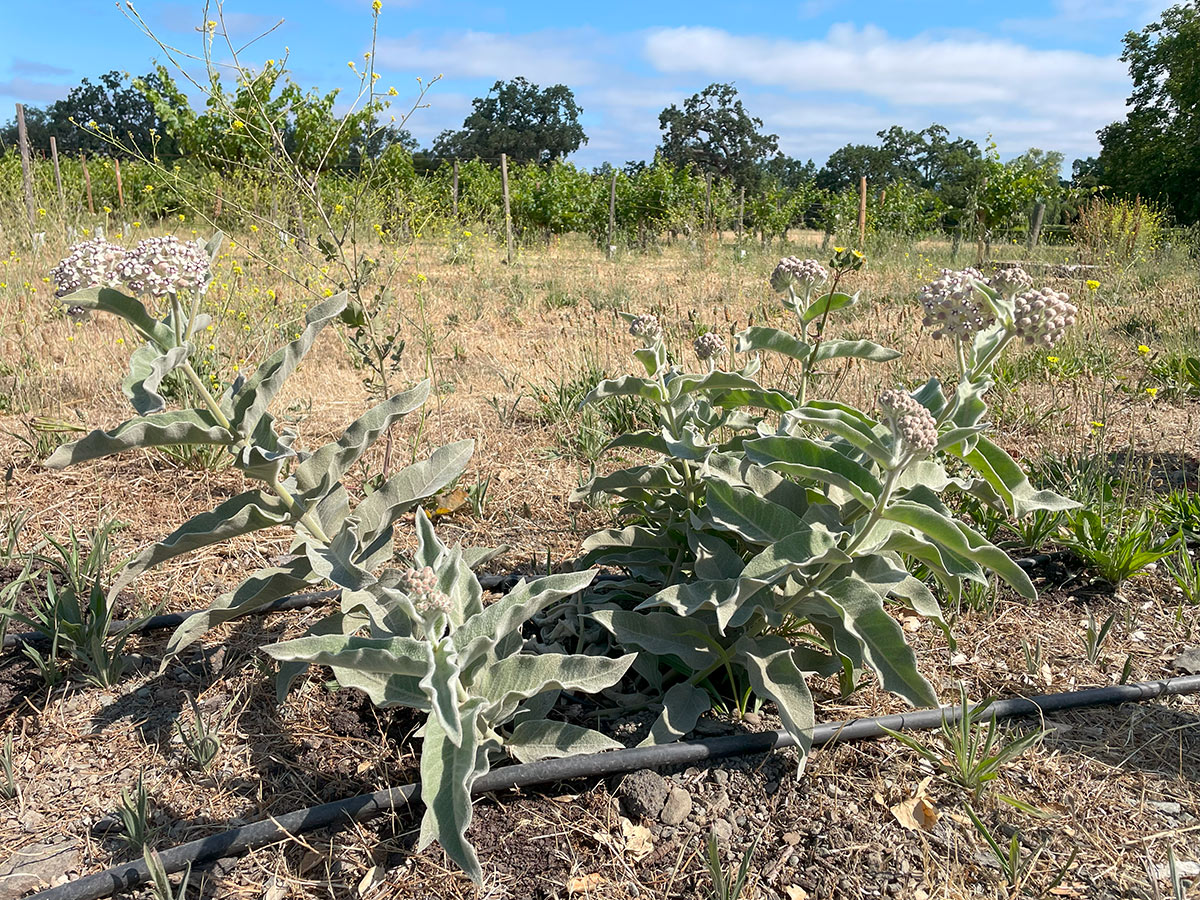
An urban garden in San Francisco
Our next stop was a peaceful urban garden space in San Francisco, where a local non-profit used the habitat kits to expand their extensive community farm and garden, a space used for education, community-building, providing wildlife habitat, and nourishing both the body and the soul.
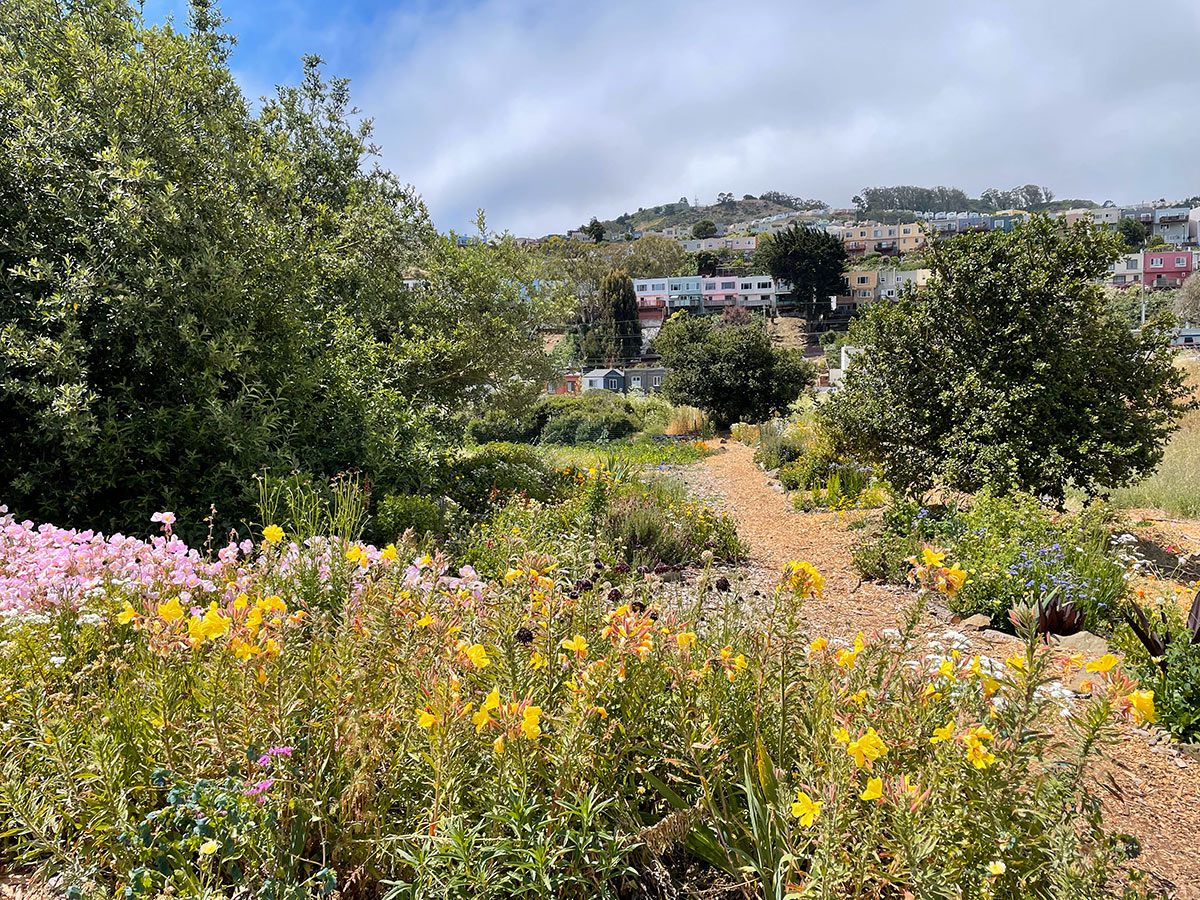
Cattle ranch in Contra Costa
Our tour ended at a cattle ranch in Contra Costa County. The ranch’s caretaker was among the first to participate in the Xerces Society’s habitat kit program, and he has been steadily building on his progress each year, planting and maintaining acres of habitat. From birds to bees to butterflies, this ranch is surely an oasis for wildlife of all kinds with its restored riparian corridor, grassland meadows and prolific milkweed patches. We spent a joyful morning exploring the ranch and observing the habitat that was truly teeming with life.
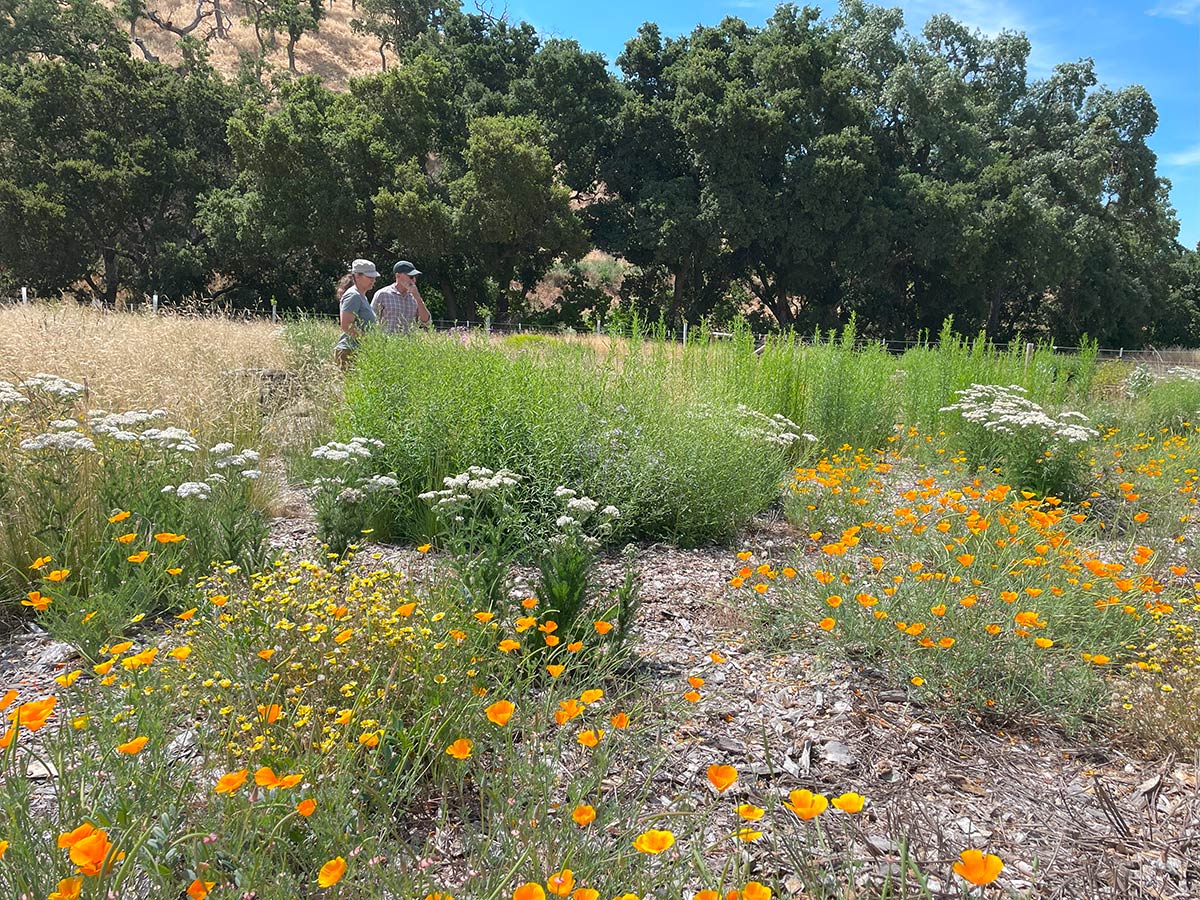
Refugia for people and pollinators alike
In addition to the joy of connecting with so many amazing partners, we were awestruck by the diversity of landscapes that are being transformed. Through this program, people are creating greenspaces in cities, parks, preserves, farms, ranches, schools and tribal lands. From coastal dunes to chaparral, oak woodlands to grasslands, and vineyards to vegetable gardens, our partners are forming a patchwork of refugia for people and pollinators alike.

